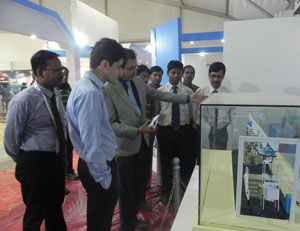There are quite a number of methods to help move prepared coal from the mine to the markets. In fact, the cost of transporting coal can be substantial and also accounts for an enormous fraction of the total cost to the consumer.
Railroads
One of the most common modes of hauling coal over long distances is through rail transportation. What actually makes railcars capital-intensive are roadbed, track requirements as well as a large fixed investment. However, the maintenance requirements is a relatively hassle-free operation that makes large volume shipments possible with a high mechanical efficiency that is obtained with low rolling resistances. These are certain factors that make rail transport one of the most attractive methods of transportation for long-term, long-distance as well as high-volume movements of coal.
On-highway Trucks
In case the distances to be covered and shipment sizes are smaller than usual, when it comes to coal logistics, it would be a good idea to transport it by truck through a network of public roads. While off-highway trucks can carry heavier coal, on-highway tricks are generally smaller and do not exceed 25-ton payloads. There are several advantages of using on-highway trucks because of several reasons – they can negotiate a lot more severe grades and curves and in fact, with just a meagre capital investment, roads can be resurfaced or constructed more readily than railroads, thereby making the coal flow a lot more consistent by simply adding new trucks and replacing the failing ones.
Conveyors
Although the use of conveyors for carrying coal over comparatively longer distances is not very common, it is also not very uncommon to find conveyors transporting coal from mines to barge-loading stations. Additionally, in case a power plant is in close proximity to a mime, conveyors are typically used to carry coal to the power plant stockpile. One of the biggest advantages of conveyors is that they can traverse through the toughest terrain quite conveniently than trucks or even rail systems. In fact, KCT Group is the largest coal logistics company in India that transports coal across the country by road, rail and sea.
Slurry pipelines
A mixture of crushed coal and a liquid such as water or oil, coal slurry is a traditional mixture that was first patented in England, in the year of 1891. It consisted of 50% coal and 50% water by weight. These heavy coal slurries consisted of about 65% to 75% of coal, with the remainder being water, oil or methanol. Traditional slurry is usually transported by pipeline to the user, who then separates the water from the coal before burning. However, adding to its advantage, slurry fuels can be fired directly into boilers.
It is quite evident that transportation costs have a huge and significant impact on coal exports. In fact, there are substantial capital costs involved in developing the required facilities as well as in maintaining sizable stockpiles at the exporting ports. So, in case you’re looking for an efficient coal logistics company in India, Karam Chand Thapar & Bros. Ltd., The company efficiently transports between 60-70 million metric tons of coal annually across the country by road, rail and sea.


